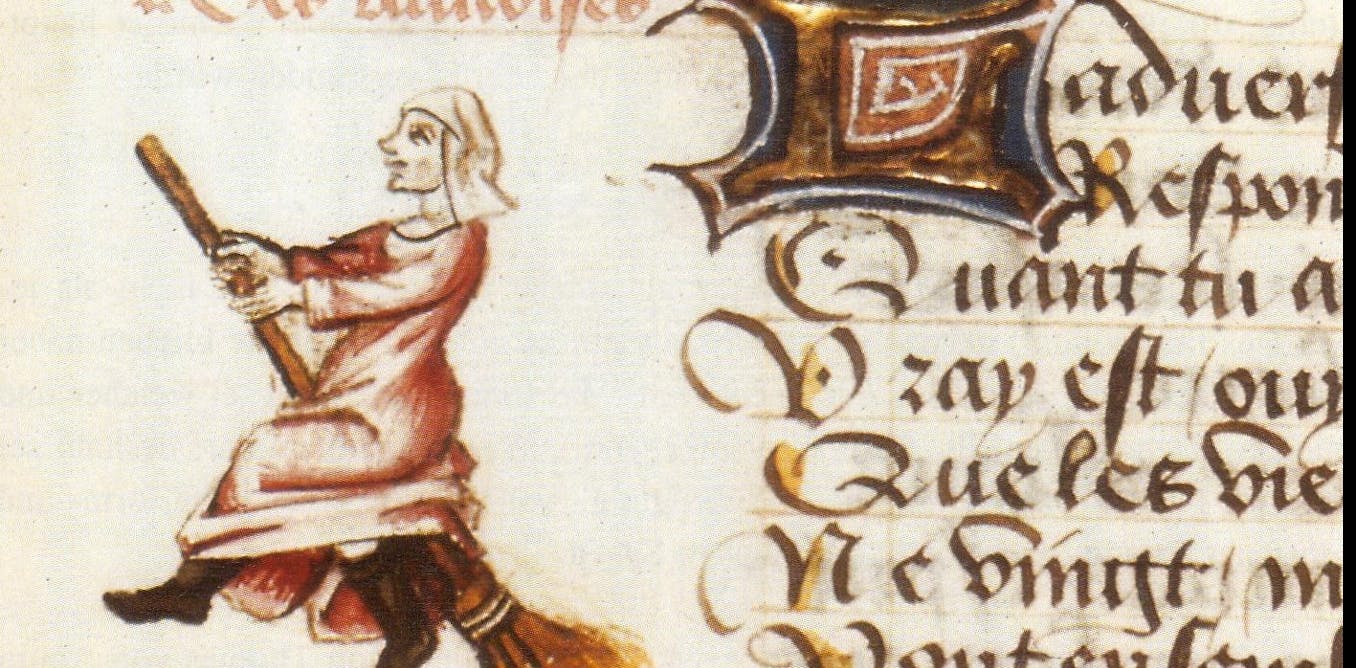The image of a witch flying on a broomstick is iconic, but it is not nearly as old as the idea of witchcraft itself, which dates to the earliest days of humankind.
Several theologians, church inquisitors, secular magistrates and other authorities first wrote about such flight in the early 1400s. The earliest known visual depiction of flying witches appears in a 1451 manuscript copy of one such text, “Le champion des dames” (“The Defender of Ladies”), by the French poet Martin Le Franc.
Witchcraft accusations at this time were increasingly focused on women. The clothing of the figures in Le Franc’s text depicts them as coming from non-elite ranks of medieval society. So do the implements on which they fly. Staffs and brooms were tools for ordinary housework.
The notion that witches could fly served to support the idea that they gathered in large groups called sabbaths. These gatherings, in turn, heightened the supposed threat witches posed to Christian society.
Even after the idea of witches flying on brooms was introduced to European society, it was not readily accepted. Many who wrote about witchcraft at this time, including Le Franc, were quite skeptical about the reality of flying witches.
As it turned out, however, authorities could still perceive a threat even if they believed witches’ flight was imaginary.



I also heard this one. My professor in art school said the broom thing may have come from a misunderstanding of a distaff which could look like a broom with the fibres wrapped around the end. Distaffs would have been a common tool a woman would have. They were smooth and polished and were likely used for other amusements.
Oh interesting, yes they look much more…uhhh… comfortable.
Check out the one on the left. They often look quite donger-ish.